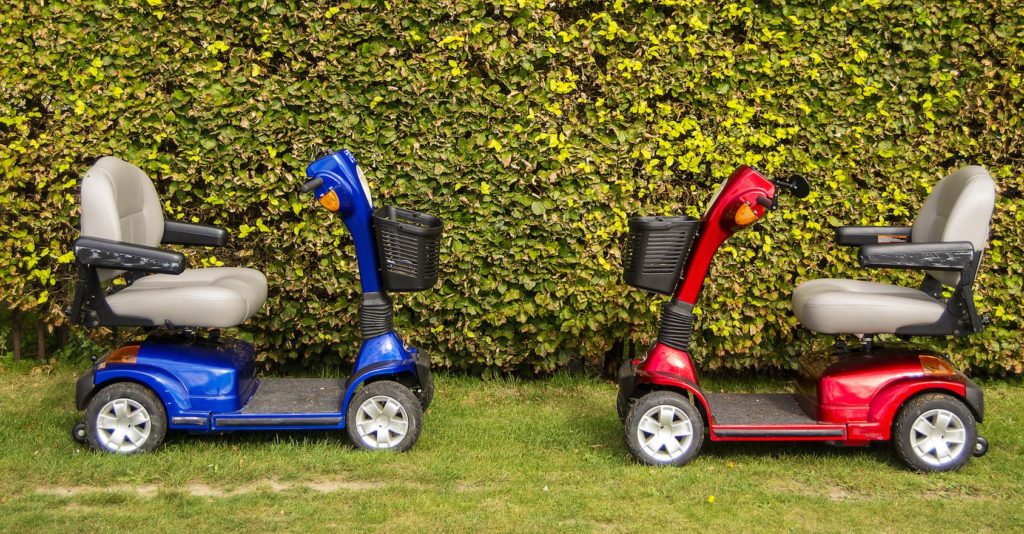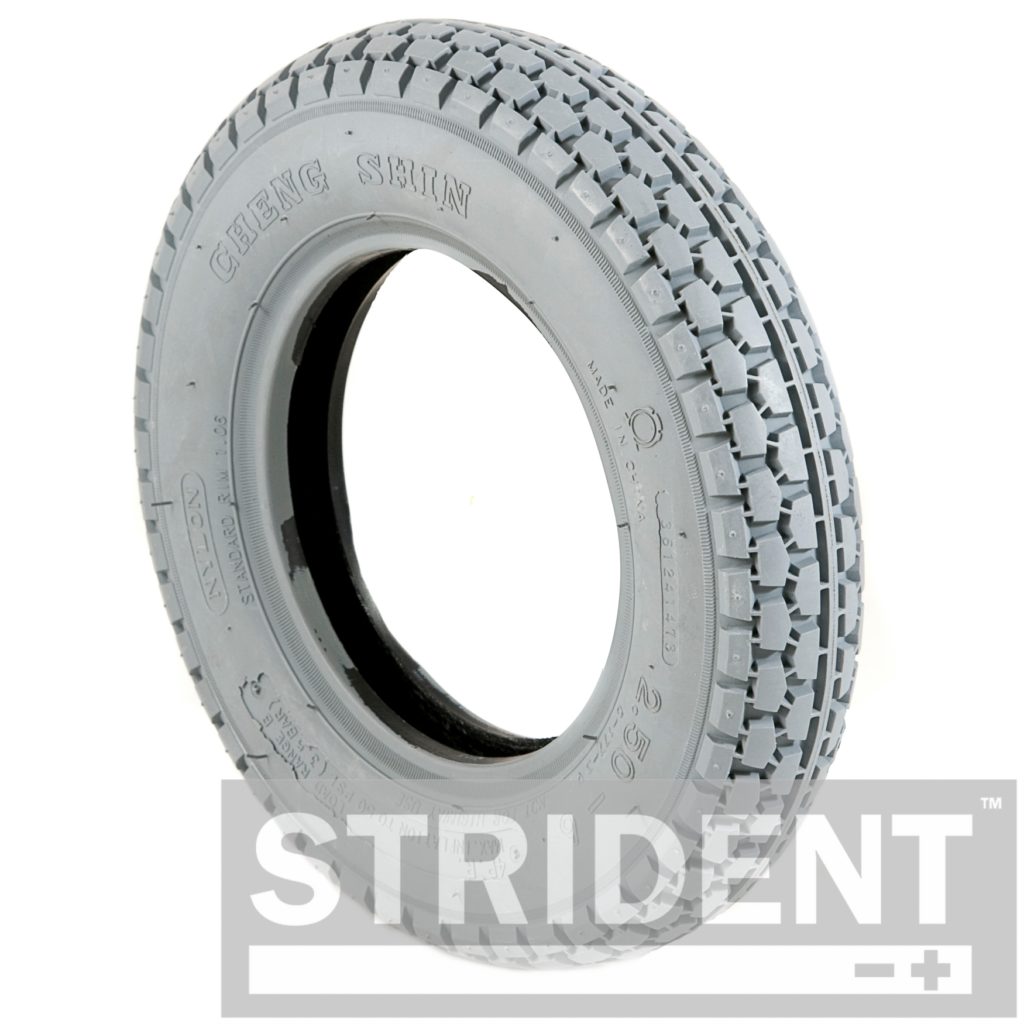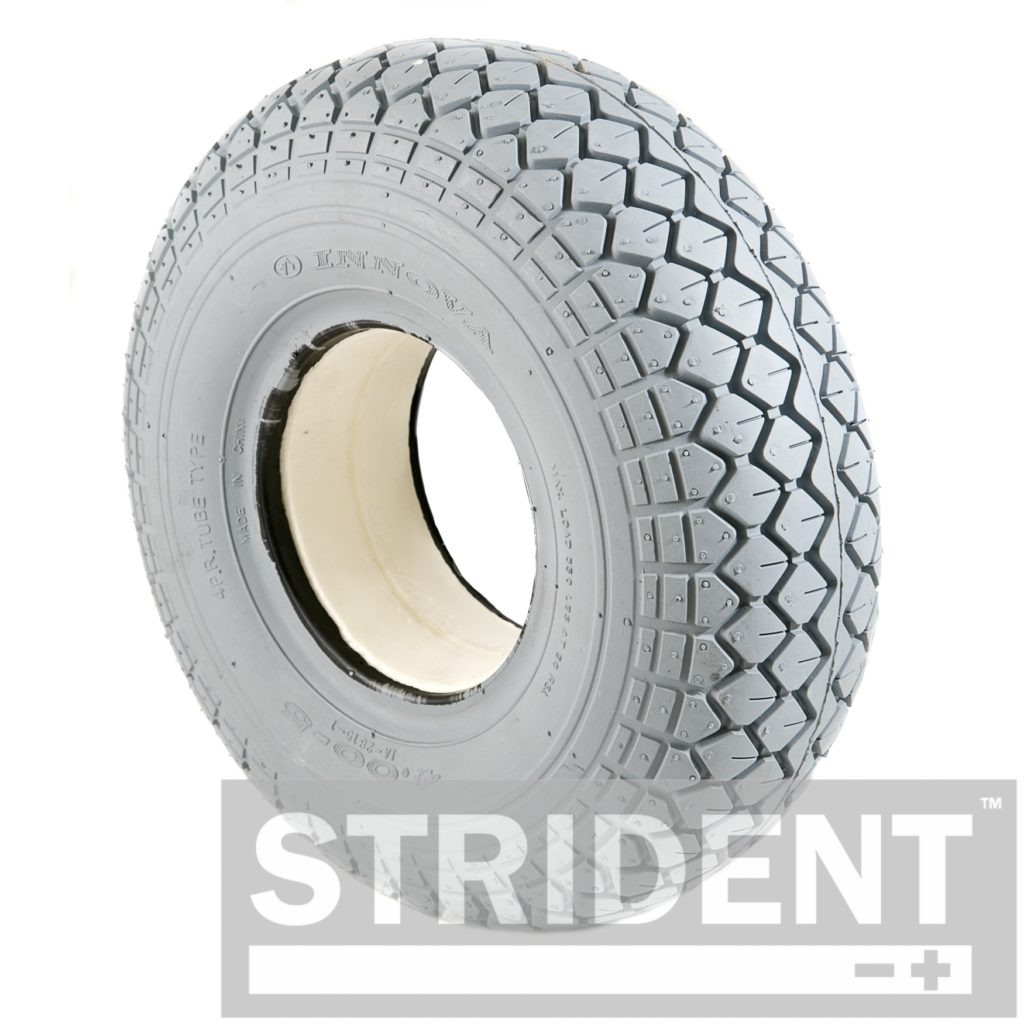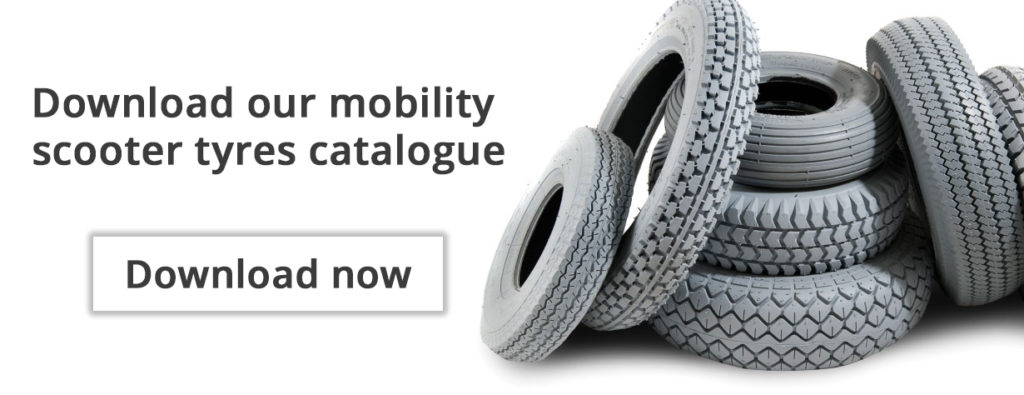
For anyone starting to experience poorer battery performance on a mobility scooter, one of the key factors that can have a big impact is the condition of the scooter tyres and, in particular, tyre wear.
So, if a mobility scooter isn’t performing as usual, don’t always assume it is just the battery to blame. While this might be true – and should be checked – you could be missing the actual reason as to why the battery is underperforming.
How does mobility scooter tyre wear affect battery performance?
When tyres become worn or are underinflated, this creates more friction on the surface as a result. In turn, this causes the motor (or motors) on the mobility scooter to work harder, and thus the battery will drain more quickly.
Preventing mobility scooter tyres from wearing
There are numerous ways to prevent tyre wear on a mobility scooter:
- Visually check the tyre tread depth and, if you can see that it’s running low, then it is time to think about a replacement. Also, check for any bald patches and tears that have appeared.
- If the mobility scooter has pneumatic tyres – ensure the mobility scooter’s tyres are inflated to the correct PSI. Underinflated tyres cause added friction and an overworking of the battery and motors. (Do not over-inflate though as this can increase the risk of a puncture or tyre blow-out.)
- Ensure the mobility scooter receives regular servicing. A professional will be able to advise on when a mobility scooter needs new tyres and can point out any safety issues.
What are the signs of mobility scooter tyre wear?
As with anything, when mobility scooter tyres begin to wear, you will notice some changes to the general ride of the mobility scooter.
Reduced mobility scooter range
One of the key signs that tyres are beginning to wear is a reduced range. It is very easy to think that the battery on the mobility scooter needs replacing when the range falls – but there may be nothing wrong with it, and it is underperforming only as a result of the tyres wearing.
Other signs of tyre wear are very different depending on whether the mobility scooter has pneumatic or solid tyres. Let’s talk you through what the signs are for both.
- Steering begins to feel heavier because of worn or flat tyres
- Visual indicators that the tyres have become flat
- Tyre treads are not very deep, and areas of the rubber are worn
- Along with the external wear and tear, solid mobility scooter tyres have the potential to wear internally, which makes it hard to check the wear on the tyres visually.
- A more likely sign of internal wear in solid tyres can be an uneven feel to the ride or look ‘underinflated’
What are the best mobility scooter tyres to use?
We would always recommend opting for tyres from reputable brands. Ask mobility scooter users what they have found to be reliable. You can also use the internet to look at forums for advice.
At Strident we stock tyres from two of the most reputable, established, brands in the mobility scooter industry – Cheng Shin and Innova.
The more ‘budget’ tyres will use a synthetic, cheaper rubber and, if you see one together with a ‘premium’ tyre, you will notice that the tread depth is less, which means that the tyre won’t last as long. You’ll also be able to feel how much thinner and lighter the material is on the budget tyre.
So our advice is very much to use a premium and a reputable brand, and that will ensure users are always maximising battery performance.
You may also want to consider whether you want to use a solid or air tyre.
To help decide what’s best for someones own personal use we’ve done another blog that compares air vs solid mobility scooter tyres.
Who should replace mobility scooter tyres?
Replacing a mobility scooter tyre isn’t an easy job that anybody can do, it requires specialist training and equipment. For example, when replacing a solid tyre, the tyre needs to be compressed before fitting to the wheel rim using specialist equipment.
When fitting solid tyres, there is a danger that if it is not fitted correctly, then it won’t grip the rims properly. This is a real safety hazard and puts the user at risk of having an accident.
Don’t put users at risk on a mobility scooter
Worn, underinflated or incorrectly fitted tyres not only impact battery performance but can carry a risk. No-one would drive a car on the road with worn tyres, so why would anyone use worn tyres on something as important as a mobility scooter?
Driving on worn tyres comes with risks, the major one being losing traction on a slope or turning a sharp corner. When mobility scooter tyres start to wear and become bald, there is an immediate risk of losing control. Please do make sure mobility scooters receive regular servicing and do visually check the tyres on a regular basis for signs of wear.
Why use Strident for your mobility scooter tyres?
At Strident, we only stock tyres from reputable brands, so you can be sure that you’re getting excellent quality. We also recognise that you may need to get hold of them quickly, so we hold all of our tyres in stock and so, in most cases, we can dispatch tyres on the same day.
Find out more about our tyres by downloading our brochure below.


